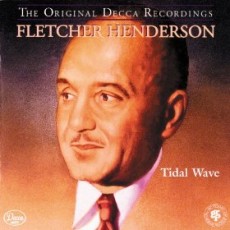
Daily Dose Of Jazz…
Fletcher Henderson was born James Fletcher Hamilton Henderson, Jr. on December 18, 1897 in Cuthbert, Georgia. The home he grew up in, known as the Fletcher Henderson House, is now a historic site. He attended Atlanta University in Atlanta, Georgia graduating in 1920, leaving with the nickname “Smack” due to his college baseball hitting skills. Moving to New York City he enrolled at Columbia University to pursue a masters degree in chemistry but found job prospect lean so he chose music to make a living.
During the early to mid-Twenties Fletcher was the recording director of the fledgling Black Swan record label, provided solo piano accompaniment for many blues singers, and led the backing group for Ethel Waters during one of her national tours. In 1922 he formed his own band with Don Redman arranging the charts, took residency at the Club Alabam, then at the Roseland Ballroom, and quickly became known as the best Black band in New York. When Louis Armstrong joined his orchestra in 1924 for a year, he saw the richer potential for jazz band orchestration. As an arranger, Henderson came into his own from 1931 into the mid-1930s.[2]
His bands included Howard Scott, Coleman Hawkins, Charlie Dixon, Kaiser Marshall, Buster Bailey, Elmer Chambers, Charlie Green, Ralph Escudero, Don Redman, Henry “Red” Allen, Joe Smith, Rex Stewart, Tommy Ladnier, Doc Cheatham, Roy Eldridge, Benny Carter, Chu Berry and Sun Ra among many others.
After about 1931, his arrangements became influential. In addition to his own band, he arranged for Teddy Hill, Isham Jones, and Benny Goodman, the latter always giving him credit. After sustaining a concussion in a car accident his success began to wane but Goodman along with John Hammond bought Henderson’s arrangements to support him during his illness.
By 1939, Fletcher disbanded his orchestra and joined Goodman’s, first as pianist and arranger and then working full-time as staff arranger. He re-formed bands of his own several times in the 1940s, toured with Ethel Waters again in 1948–1949, suffered a stroke in 1950 resulting partial paralysis that ended his piano playing.
He was responsible for bridging the gap between Dixieland and swing, establishing the formula for swing music by breaking the band into section that would play n call-and-response style and riffs. He also played a key role in bringing improvisatory jazz styles from New Orleans and other areas of the country to New York City, where they merged with a dance-band tradition that relied heavily on arrangements written out in musical notation.
Pianist, composer, arranger and bandleader Fletcher Henderson passed away in New York City on December 29, 1952. He was one of the most prolific and influential black musical arrangers and bandleaders in jazz history ranked along with Duke Ellington.
More Posts: piano


